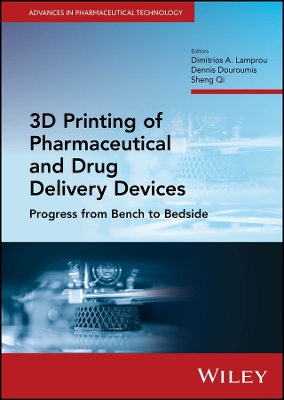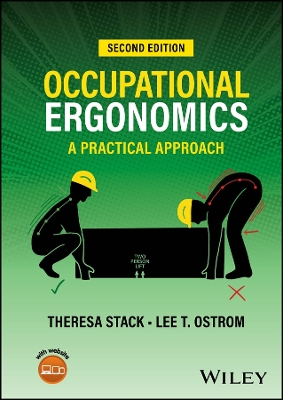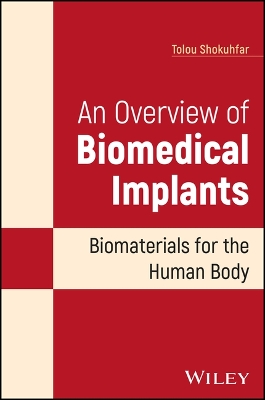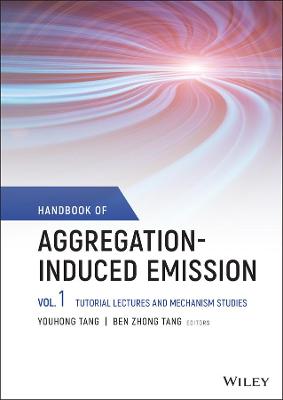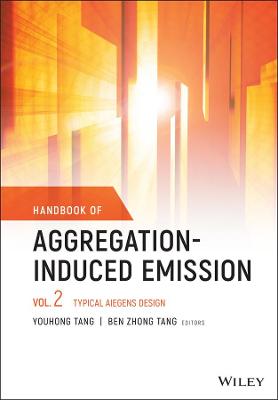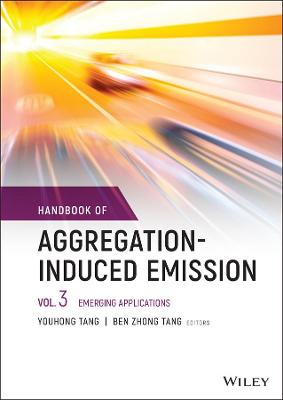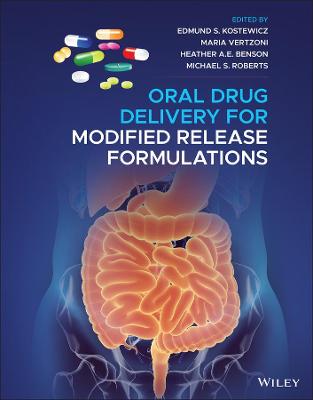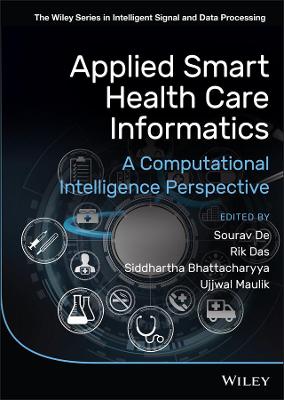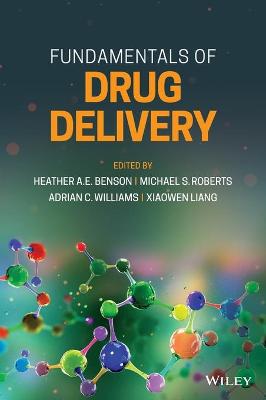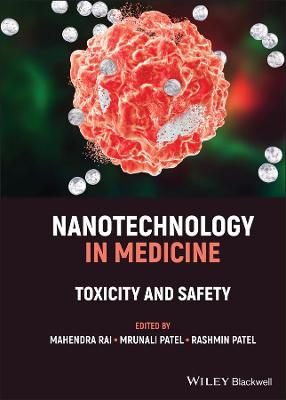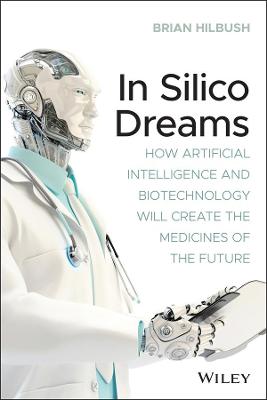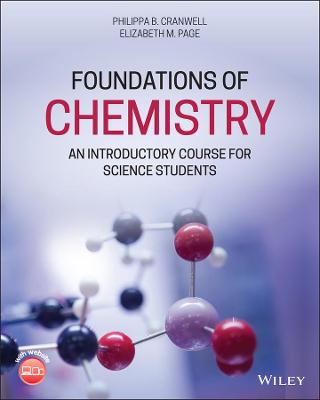Computational Modeling and Simulation Examples in Bioengineering
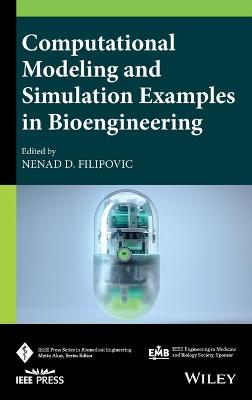 -15%
portes grátis
-15%
portes grátis
Computational Modeling and Simulation Examples in Bioengineering
Filipovic, Nenad
John Wiley & Sons Inc
12/2021
384
Dura
Inglês
9781119563945
15 a 20 dias
668
Author Biographies xii
Preface xv
1 Computational Modeling of Abdominal Aortic Aneurysms 1
Nenad D. Filipovic
1.1 Background 1
1.2 Clinical Trials for AAA 2
1.3 Computational Methods Applied for AAA 3
1.4 Experimental Testing to Determine Material Properties 6
1.5 Material Properties of the Aorta Wall 8
1.6 ILT Modeling 9
1.7 Finite Element Procedure and Fluid-Structure Interaction 12
1.7.1 Displacement Force Calculations 12
1.7.2 Shear Stress Calculation 13
1.7.3 Modeling the Deformation of Blood Vessels 13
1.7.4 FSI Interaction 15
1.8 Data Mining and Future Clinical Decision Support System 16
1.9 Conclusions 19
References 23
2 Modeling the Motion of Rigid and Deformable Objects in Fluid Flow 33
Tijana Djukic and Nenad D. Filipovic
2.1 Introduction 33
2.2 Numerical Model 35
2.2.1 Modeling Blood Flow 36
2.2.2 Modeling Solid-Fluid Interaction 40
2.2.2.1 Modeling the Motion of Rigid Particle 42
2.2.2.2 Modeling the Motion of Deformable Particle 45
2.2.3 Modeling Deformation of the Particle 46
2.2.3.1 Force Caused by the Surface Strain of Membrane 47
2.2.3.2 Force Caused by the Bending of the Membrane 51
2.2.3.3 Force Caused by the Change of Surface area of the Membrane 51
2.2.3.4 Force Caused by the Change of Volume 52
2.2.4 Modeling the Flow of Two Fluids with Different Viscosity that are Separated by the Membrane of the Solid 52
2.3 Results 54
2.3.1 Modeling the Behavior of Particles in Poiseuille Flow 55
2.3.2 Modeling the Behavior of Particles in Shear Flow 57
2.3.3 Modeling Behavior of Particles in Stenotic Artery 74
2.3.4 Modeling Behavior of Particles in Artery with Bifurcation 77
2.4 Conclusion 81
References 82
3 Application of Computational Methods in Dentistry 87
Ksenija Zelic Mihajlovic, Arso M. Vukicevic, and Nenad D. Filipovic
3.1 Introduction 87
3.2 Finite Element Method in Dental Research 88
3.2.1 Development of FEM in Dental Research 89
3.2.1.1 Morphology and Dimensions of the Structures - Application of Digital Imaging Systems 90
3.2.1.2 FE Model - Required/Composing Structures 91
3.2.1.3 Simulating Occlusal Load 92
3.2.1.4 Boundary Conditions 94
3.2.1.5 Importance of Periodontal Ligament, Spongious, and Cortical Bone 95
3.2.2 Overview of FEM in Dental Research - Most Important Topics in the Period 2010-2020 96
3.2.2.1 FEM in the Research Related to Implants, Restorative Dentistry, and Prosthodontics 97
3.2.2.2 FEM in Analysis of Biomechanical Behavior of Structures in Masticatory Complex 101
3.2.2.3 FEM in Orthodontic Research 102
3.2.2.4 FEM in Studies of Trauma in the Dentoalveolar Region 103
3.3 Examples of FEA in Clinical Research in Dentistry 103
3.3.1 Example 1- Assessment of Critical Breaking Force and Failure Index 104
3.3.1.1 Background 104
3.3.1.2 Materials and Methods 104
3.3.1.3 Results and Discussion 111
3.3.2 Example 2 - Assessment of the Dentine Fatigue Failure 118
3.3.2.1 Background 118
3.3.2.2 Materials and Methods 119
3.3.2.3 Results and Discussion 124
References 131
4 Determining Young's Modulus of Elasticity of Cortical Bone from CT Scans 141
Aleksandra Vulovic and Nenad D. Filipovic
4.1 Introduction 141
4.2 Bone Structure 143
4.3 Young's Modulus of Elasticity of Bone Tissue 145
4.3.1 Factors Influencing Elasticity Modulus 145
4.3.2 Experimental Calculation of Elasticity Modulus 146
4.4 Tool for Calculating the Young's Modulus of Elasticity of Cortical Bone from CT Scans 151
4.4.1 Theoretical Background 151
4.4.2 Practical Application 152
4.5 Numerical Analysis of Femoral Bone Using Calculated Elasticity Modulus 157
4.5.1 Femoral Bone Model 157
4.5.2 Material Properties 159
4.5.3 Boundary Conditions 159
4.5.4 Obtained Results 161
4.5.4.1 Case 1 165
4.5.4.2 Case 2 165
4.5.4.3 Case 3 166
4.5.4.4 Comparison of the Obtained Results 166
4.6 Conclusion 169
Acknowledgements 169
References 170
5 Parametric Modeling of Blood Flow and Wall Interaction in Aortic Dissection 175
Igor B. Saveljic and Nenad D. Filipovic
5.1 Introduction 175
5.2 Medical Background 177
5.2.1 Circulatory System 177
5.2.2 Aorta 178
5.2.3 Structure and Function of the Arterial Wall 179
5.2.4 Aortic Dissection 181
5.2.5 History of Aortic Dissection 182
5.2.6 Classification of Aortic Dissection 182
5.2.7 Diagnostic Techniques 185
5.2.7.1 Aortography 185
5.2.7.2 Computed Tomography 185
5.2.7.3 Echocardiography 186
5.2.7.4 Magnetic Resonance 186
5.2.7.5 Intravascular Ultrasound 187
5.2.8 Treatment of Acute Aortic Dissection 187
5.2.8.1 Drug Therapy 187
5.2.8.2 Surgical Treatment 188
5.3 Theoretical Background 189
5.3.1 Continuum Mechanics 189
5.3.1.1 Lagrange and Euler's Formulation of the Material Derivative 189
5.3.1.2 Law of Conservation of Mass 191
5.3.1.3 Navier-Stokes Equations 192
5.3.1.4 Equations of Solid Motion 193
5.3.2 Solid-Fluid Interaction 196
5.4 Blood Flow in the Arteries 196
5.4.1 Stationary Flow 197
5.4.2 Oscillatory (Pulsating) Flow 198
5.4.3 Flow in Curved Pipes 199
5.4.4 Blood Flow in Bifurcations 200
5.5 Numerical Simulations 201
5.6 Conclusions 213
References 213
6 Application of AR Technology in Bioengineering 219
Dalibor D. Nikolic and Nenad D. Filipovic
6.1 Introduction 219
6.2 Review of AR Technology 220
6.2.1 Augmented Reality Devices 220
6.2.2 AR Screen Based on the Monitor 221
6.2.3 AR Screen Based on Mobile Devices 221
6.2.4 Head Mounting Screen 221
6.2.5 AR in Biomedical Engineering 224
6.3 Marker-based AR Simple Application, Based on the OpenCV Framework 227
6.3.1 Generating ArUco Markers in OpenCV 229
6.4 Marker-less AR Simple Application, Based on the OpenCV Framework 235
6.4.1 Use Feature Descriptors to Find the Target Image in a Video 236
6.4.2 Calculating the Camera-intrinsic Matrix 247
6.4.3 Rendering AR with a Simple OpenGL Object (Cube) 250
6.5 Conclusion 255
References 255
7 Augmented Reality Balance Physiotherapy in HOLOBALANCE Project 259
Nenad D. Filipovic and Zarko Milosevic
7.1 Introduction 259
7.2 Motivation 261
7.3 Holograms-Based Balance Physiotherapy 265
7.4 Mock-ups 265
7.4.1 Meta 2 266
7.4.2 HoloLens 268
7.4.3 Holobox 270
7.4.4 Modeling of BP in Unity 3D 272
7.5 Final Version 273
7.5.1 Balance Physiotherapy Hologram (BPH) 278
7.5.2 BPH-MCWS Communication 279
7.5.3 Speech Recognition 286
7.5.4 Localization 288
7.5.5 Motion Capturing 288
7.5.6 Marker-less Motion Capture 289
7.5.7 Marker-based Motion Capture 290
7.5.8 Optical Systems 291
7.5.9 World Tracking 291
7.6 Biomechanical Model of Avatar Based on the Muscle Modeling 295
7.6.1 Muscle Modeling 298
References 301
8 Modeling of the Human Heart - Ventricular Activation Sequence and ECG Measurement 305
Nenad D. Filipovic
8.1 Introduction 305
8.2 Materials and Methods 307
8.2.1 Material Model Based on Holzapfel Experiments 309
8.2.2 Biaxial Loading: Experimental Curves 309
8.3 Determination of Stretches in the Material Local Coordinate System 310
8.4 Determination of Normal Stresses from Current Stretches 313
8.4.1 Determination of Shear Stresses from Current Shear Strains 314
8.5 Results and Discussion 316
8.6 Conclusion 317
Acknowledgements 320
References 320
9 Implementation of Medical Image Processing Algorithms on FPGA Using Xilinx System Generator 323
Tijana I. Sustersic? and Nenad D. Filipovic
9.1 Brief Introduction to FPGA 323
9.1.1 Xilinx System Generator 325
Algorithm Exploration 326
Implementing Part of a Larger Design 327
Implementing a Complete Design 327
9.1.2 Image Processing on FPGAs Using XSG 327
9.2 Building a Simple Model Using XSG 329 Prerequisites 330
9.3 Medical Image Processing Using XSG 334
9.3.1 Image Pre- and Post-Processing 334
9.3.2 Algorithms for Image Preprocessing 335
9.3.2.1 Algorithm for Negative Image 335
9.3.2.2 Algorithm for Image Contrast Stretching 337
9.3.2.3 Image Edge Detection 337
9.3.3 Hardware Co-Simulation 351
9.4 Results and Discussion 352
9.5 Conclusions 359
Acknowledgments 359
References 360
Index 363
Author Biographies xii
Preface xv
1 Computational Modeling of Abdominal Aortic Aneurysms 1
Nenad D. Filipovic
1.1 Background 1
1.2 Clinical Trials for AAA 2
1.3 Computational Methods Applied for AAA 3
1.4 Experimental Testing to Determine Material Properties 6
1.5 Material Properties of the Aorta Wall 8
1.6 ILT Modeling 9
1.7 Finite Element Procedure and Fluid-Structure Interaction 12
1.7.1 Displacement Force Calculations 12
1.7.2 Shear Stress Calculation 13
1.7.3 Modeling the Deformation of Blood Vessels 13
1.7.4 FSI Interaction 15
1.8 Data Mining and Future Clinical Decision Support System 16
1.9 Conclusions 19
References 23
2 Modeling the Motion of Rigid and Deformable Objects in Fluid Flow 33
Tijana Djukic and Nenad D. Filipovic
2.1 Introduction 33
2.2 Numerical Model 35
2.2.1 Modeling Blood Flow 36
2.2.2 Modeling Solid-Fluid Interaction 40
2.2.2.1 Modeling the Motion of Rigid Particle 42
2.2.2.2 Modeling the Motion of Deformable Particle 45
2.2.3 Modeling Deformation of the Particle 46
2.2.3.1 Force Caused by the Surface Strain of Membrane 47
2.2.3.2 Force Caused by the Bending of the Membrane 51
2.2.3.3 Force Caused by the Change of Surface area of the Membrane 51
2.2.3.4 Force Caused by the Change of Volume 52
2.2.4 Modeling the Flow of Two Fluids with Different Viscosity that are Separated by the Membrane of the Solid 52
2.3 Results 54
2.3.1 Modeling the Behavior of Particles in Poiseuille Flow 55
2.3.2 Modeling the Behavior of Particles in Shear Flow 57
2.3.3 Modeling Behavior of Particles in Stenotic Artery 74
2.3.4 Modeling Behavior of Particles in Artery with Bifurcation 77
2.4 Conclusion 81
References 82
3 Application of Computational Methods in Dentistry 87
Ksenija Zelic Mihajlovic, Arso M. Vukicevic, and Nenad D. Filipovic
3.1 Introduction 87
3.2 Finite Element Method in Dental Research 88
3.2.1 Development of FEM in Dental Research 89
3.2.1.1 Morphology and Dimensions of the Structures - Application of Digital Imaging Systems 90
3.2.1.2 FE Model - Required/Composing Structures 91
3.2.1.3 Simulating Occlusal Load 92
3.2.1.4 Boundary Conditions 94
3.2.1.5 Importance of Periodontal Ligament, Spongious, and Cortical Bone 95
3.2.2 Overview of FEM in Dental Research - Most Important Topics in the Period 2010-2020 96
3.2.2.1 FEM in the Research Related to Implants, Restorative Dentistry, and Prosthodontics 97
3.2.2.2 FEM in Analysis of Biomechanical Behavior of Structures in Masticatory Complex 101
3.2.2.3 FEM in Orthodontic Research 102
3.2.2.4 FEM in Studies of Trauma in the Dentoalveolar Region 103
3.3 Examples of FEA in Clinical Research in Dentistry 103
3.3.1 Example 1- Assessment of Critical Breaking Force and Failure Index 104
3.3.1.1 Background 104
3.3.1.2 Materials and Methods 104
3.3.1.3 Results and Discussion 111
3.3.2 Example 2 - Assessment of the Dentine Fatigue Failure 118
3.3.2.1 Background 118
3.3.2.2 Materials and Methods 119
3.3.2.3 Results and Discussion 124
References 131
4 Determining Young's Modulus of Elasticity of Cortical Bone from CT Scans 141
Aleksandra Vulovic and Nenad D. Filipovic
4.1 Introduction 141
4.2 Bone Structure 143
4.3 Young's Modulus of Elasticity of Bone Tissue 145
4.3.1 Factors Influencing Elasticity Modulus 145
4.3.2 Experimental Calculation of Elasticity Modulus 146
4.4 Tool for Calculating the Young's Modulus of Elasticity of Cortical Bone from CT Scans 151
4.4.1 Theoretical Background 151
4.4.2 Practical Application 152
4.5 Numerical Analysis of Femoral Bone Using Calculated Elasticity Modulus 157
4.5.1 Femoral Bone Model 157
4.5.2 Material Properties 159
4.5.3 Boundary Conditions 159
4.5.4 Obtained Results 161
4.5.4.1 Case 1 165
4.5.4.2 Case 2 165
4.5.4.3 Case 3 166
4.5.4.4 Comparison of the Obtained Results 166
4.6 Conclusion 169
Acknowledgements 169
References 170
5 Parametric Modeling of Blood Flow and Wall Interaction in Aortic Dissection 175
Igor B. Saveljic and Nenad D. Filipovic
5.1 Introduction 175
5.2 Medical Background 177
5.2.1 Circulatory System 177
5.2.2 Aorta 178
5.2.3 Structure and Function of the Arterial Wall 179
5.2.4 Aortic Dissection 181
5.2.5 History of Aortic Dissection 182
5.2.6 Classification of Aortic Dissection 182
5.2.7 Diagnostic Techniques 185
5.2.7.1 Aortography 185
5.2.7.2 Computed Tomography 185
5.2.7.3 Echocardiography 186
5.2.7.4 Magnetic Resonance 186
5.2.7.5 Intravascular Ultrasound 187
5.2.8 Treatment of Acute Aortic Dissection 187
5.2.8.1 Drug Therapy 187
5.2.8.2 Surgical Treatment 188
5.3 Theoretical Background 189
5.3.1 Continuum Mechanics 189
5.3.1.1 Lagrange and Euler's Formulation of the Material Derivative 189
5.3.1.2 Law of Conservation of Mass 191
5.3.1.3 Navier-Stokes Equations 192
5.3.1.4 Equations of Solid Motion 193
5.3.2 Solid-Fluid Interaction 196
5.4 Blood Flow in the Arteries 196
5.4.1 Stationary Flow 197
5.4.2 Oscillatory (Pulsating) Flow 198
5.4.3 Flow in Curved Pipes 199
5.4.4 Blood Flow in Bifurcations 200
5.5 Numerical Simulations 201
5.6 Conclusions 213
References 213
6 Application of AR Technology in Bioengineering 219
Dalibor D. Nikolic and Nenad D. Filipovic
6.1 Introduction 219
6.2 Review of AR Technology 220
6.2.1 Augmented Reality Devices 220
6.2.2 AR Screen Based on the Monitor 221
6.2.3 AR Screen Based on Mobile Devices 221
6.2.4 Head Mounting Screen 221
6.2.5 AR in Biomedical Engineering 224
6.3 Marker-based AR Simple Application, Based on the OpenCV Framework 227
6.3.1 Generating ArUco Markers in OpenCV 229
6.4 Marker-less AR Simple Application, Based on the OpenCV Framework 235
6.4.1 Use Feature Descriptors to Find the Target Image in a Video 236
6.4.2 Calculating the Camera-intrinsic Matrix 247
6.4.3 Rendering AR with a Simple OpenGL Object (Cube) 250
6.5 Conclusion 255
References 255
7 Augmented Reality Balance Physiotherapy in HOLOBALANCE Project 259
Nenad D. Filipovic and Zarko Milosevic
7.1 Introduction 259
7.2 Motivation 261
7.3 Holograms-Based Balance Physiotherapy 265
7.4 Mock-ups 265
7.4.1 Meta 2 266
7.4.2 HoloLens 268
7.4.3 Holobox 270
7.4.4 Modeling of BP in Unity 3D 272
7.5 Final Version 273
7.5.1 Balance Physiotherapy Hologram (BPH) 278
7.5.2 BPH-MCWS Communication 279
7.5.3 Speech Recognition 286
7.5.4 Localization 288
7.5.5 Motion Capturing 288
7.5.6 Marker-less Motion Capture 289
7.5.7 Marker-based Motion Capture 290
7.5.8 Optical Systems 291
7.5.9 World Tracking 291
7.6 Biomechanical Model of Avatar Based on the Muscle Modeling 295
7.6.1 Muscle Modeling 298
References 301
8 Modeling of the Human Heart - Ventricular Activation Sequence and ECG Measurement 305
Nenad D. Filipovic
8.1 Introduction 305
8.2 Materials and Methods 307
8.2.1 Material Model Based on Holzapfel Experiments 309
8.2.2 Biaxial Loading: Experimental Curves 309
8.3 Determination of Stretches in the Material Local Coordinate System 310
8.4 Determination of Normal Stresses from Current Stretches 313
8.4.1 Determination of Shear Stresses from Current Shear Strains 314
8.5 Results and Discussion 316
8.6 Conclusion 317
Acknowledgements 320
References 320
9 Implementation of Medical Image Processing Algorithms on FPGA Using Xilinx System Generator 323
Tijana I. Sustersic? and Nenad D. Filipovic
9.1 Brief Introduction to FPGA 323
9.1.1 Xilinx System Generator 325
Algorithm Exploration 326
Implementing Part of a Larger Design 327
Implementing a Complete Design 327
9.1.2 Image Processing on FPGAs Using XSG 327
9.2 Building a Simple Model Using XSG 329 Prerequisites 330
9.3 Medical Image Processing Using XSG 334
9.3.1 Image Pre- and Post-Processing 334
9.3.2 Algorithms for Image Preprocessing 335
9.3.2.1 Algorithm for Negative Image 335
9.3.2.2 Algorithm for Image Contrast Stretching 337
9.3.2.3 Image Edge Detection 337
9.3.3 Hardware Co-Simulation 351
9.4 Results and Discussion 352
9.5 Conclusions 359
Acknowledgments 359
References 360
Index 363

